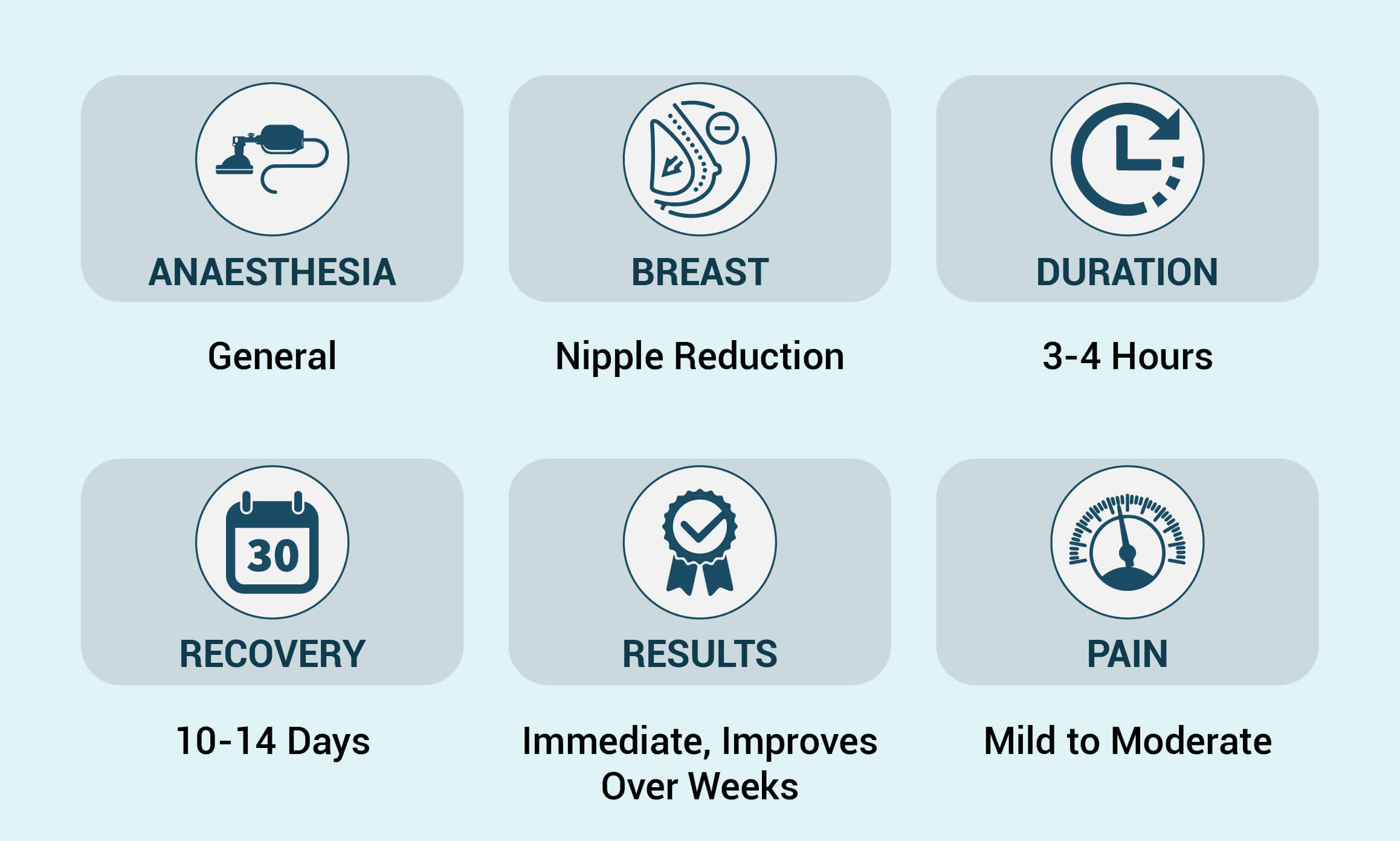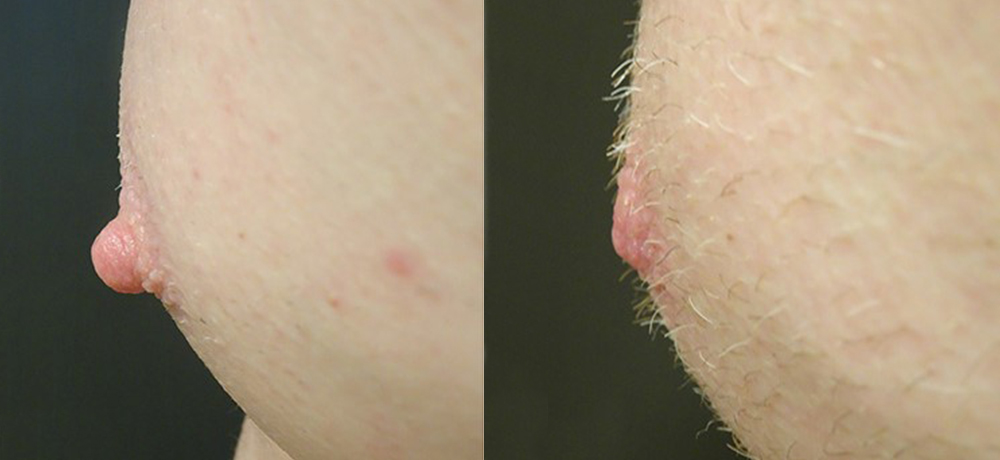Comestic Clinic for Areola Reduction Surgery in Mumbai
What is Nipple Reduction?
Nipple Reduction also known as Areola Reduction refers to the reduction in the mound of the nipple. This technique is occasionally performed in male patients who have excessive protrusion of their nipples.

Causes of Nipple Enlargement

Whether due to genetics, trauma, aging or breastfeeding, some patients’ areolae and nipples are far too large and disproportionate. This makes breasts look odd.
They may even be misshapen or asymmetric. One feels uncomfortable exposing breasts to anyone as a result.
What Issues does Nipple Reduction Address
These are some of the issues you may be looking to address:
Long Nipples
Droopy Nipples
Enlarged Areolae
Puffy Areolae
Procedure
The procedure involves excising a segment of the nipple form the lower half of the front surface of the nipple. It may also need to be done in combination with tissue from the underside of the nipple. The procedure is generally performed under local anesthetic. The patient is recommended to keep the nipples clean and dry for 48 hours and the sutures are generally removed at 10 days post-operatively. This procedure when performed in female patients may at times result in the inability to breastfeed in the future.
Please note the reduction of the diameter and size of the breast is termed a ‘mastopexy’ or ‘breast lift’.
Frequently Asked Questions
Is it necessary to treat inverted nipples?
Depending on the severity of the problem, inverted nipples require different treatments. Consult the surgeon before undergoing inverted nipple surgery.
Is there a risk associated with the inverted nipple correction procedure?
Despite its risks, inverted nipple correction surgery is very rare. Before planning a procedure, it is advisable to ask the surgeon about it.
Are the results permanent after inverted nipple correction surgery?
Inverted nipple correction results are permanent, but pregnancy and weight gain can influence them.
 WhatsApp
WhatsApp